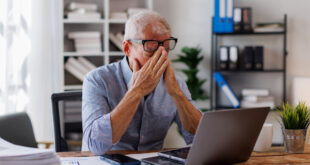Ideally, hemorrhoids should be prevented with a good diet, high in fibre, by drinking plenty of water and exercising regularly. This keeps your bowels in good condition and discourages the formation of hemorrhoids.

Hemorrhoids are actually varicose veins in the anus and rectum. They occur when blood vessels that are either inside the anus or around it become swollen. They are uncomfortable and inconvenient.
The more swollen they become, the more painful they are. Hemorrhoids may cause bleeding, and their constant irritation could lead to itching.
Hemorrhoids can be caused by constipation, chronic diarrhoea, straining when you go to the bathroom and any pressure that contributes to congestion in veins in that area (like coughing, sneezing, or sitting or standing for long periods of time). If you have strong blood vessels, sneezing and sitting won’t give you hemorrhoids.
Treatment
The first step in most doctors’ approach to treating hemorrhoids is to suggest an increase in fibre in your diet or laxatives to ease constipation. However, some herbs included in laxatives can be harsh and actually increase discomfort. Try ground flaxseed (linseed) or a combination like LSA (ground linseed, sunflower seed and almond) to give your digestive system a bit of help.
Your doctor or pharmacist can also recommend topical anti-inflammatory suppositories or creams for temporary relief.
For persistent and severe hemorrhoids, ligation is a more drastic therapy where your doctor ties a small rubber band tightly at the base of the external hemorrhoid. This cuts off circulation and the hemorrhoid falls off. Sometimes, it’s necessary to repeat this treatment.
Finally, surgery may be an option if your hemorrhoids are particularly large or painful, or if bleeding won’t stop.
Supplementary treatments
Daily sitz baths can reduce inflammation. Get a large plastic basin and put it in your bathtub. Put two to three inches of hot water (110-120 degrees) in the basin and sit in it for about 20 minutes. If possible, add some hotter water in the tub so your feet are warmer than your bottom. Bring a cold washcloth with you so you don’t get too warm. Afterwards, take a cool shower or splash the area with cool water and gently dry well.
You can add a cup of chamomile or comfrey tea to your bath to act as an anti-inflammatory, or add a few drops of valerian root tincture.
Some naturopaths and pharmacists may also advise supplements containing vitamin C, bioflavonoids, horse chestnut, bilberry and gingko. Butcher’s broom can be used to support fragile veins and prevent the pain of hemorrhoids. Try witch hazel, either as an ointment or a tea.
Whilst unpleasant, hemorrhoids can be successfully managed and treated. Seek professional advice at the first sign of symptoms for the best chance of success.









- 11 years ago
Where can I get a sitz Bath?